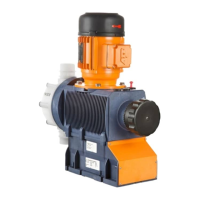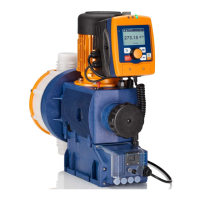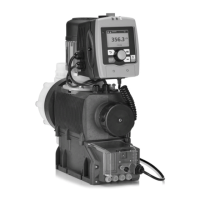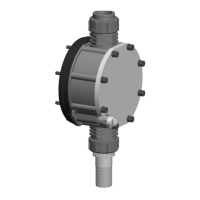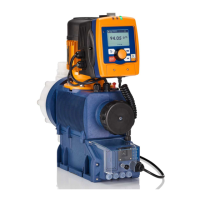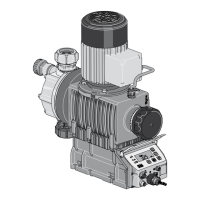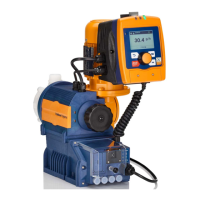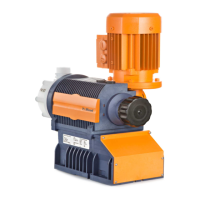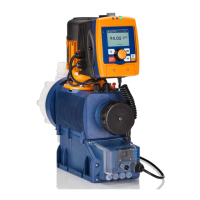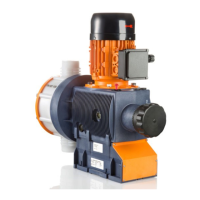WARNING!
Danger of electric shock
A mains voltage may exist inside the motor or electrical ancil‐
laries.
– If the housing of the motor or electrical ancillaries has
been damaged, you must disconnect it from the mains
immediately. The pump must only be returned to service
after an authorised repair.
What requires electrical installation?
n Motor
n External fan (optional)
n Stroke control drive (optional)
n Stroke adjusting drive (optional)
n Diaphragm rupture sensor (Option)
n Stroke sensor (optional)
n Pacing relay (option)
n Frequency converter (optional)
WARNING!
EX pumps in areas at risk from explosion
– Protect drive motors with appropriate motor protection
switches. Only use motor protection permitted for this
kind of application with Ex"e" motors. (Protection against
heating from overloading)
– Ensure that motors are only installed and inspected by a
"recognisably trained" skilled operative in areas at risk
from explosion.
–
Observe the enclosed operating instructions for the Ex
motor.
CAUTION!
The motor can be damaged
Provide appropriate motor protection devices (e.g. motor pro‐
tection switch with thermal overcurrent trip) to protect the
motor against overloading.
Fuses do not provide motor protection.
CAUTION!
The pump can be damaged
The pump can be damaged if the motor drives the pump in
the wrong direction.
– When connecting the motor, pay attention to the correct
direction of rotation indicated by the arrow on the fan
cover, as shown in Fig. 18.
Install an electrical isolating device in the mains supply
cable, e.g. a mains switch, to be able to switch off the pump
independently of the entire installation (e.g. for repair).
Motor
Fig. 18: Direction of rotation of motor
Installation, electrical
24
